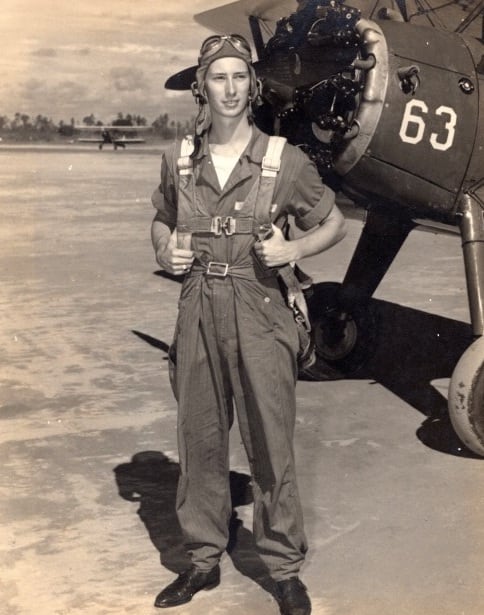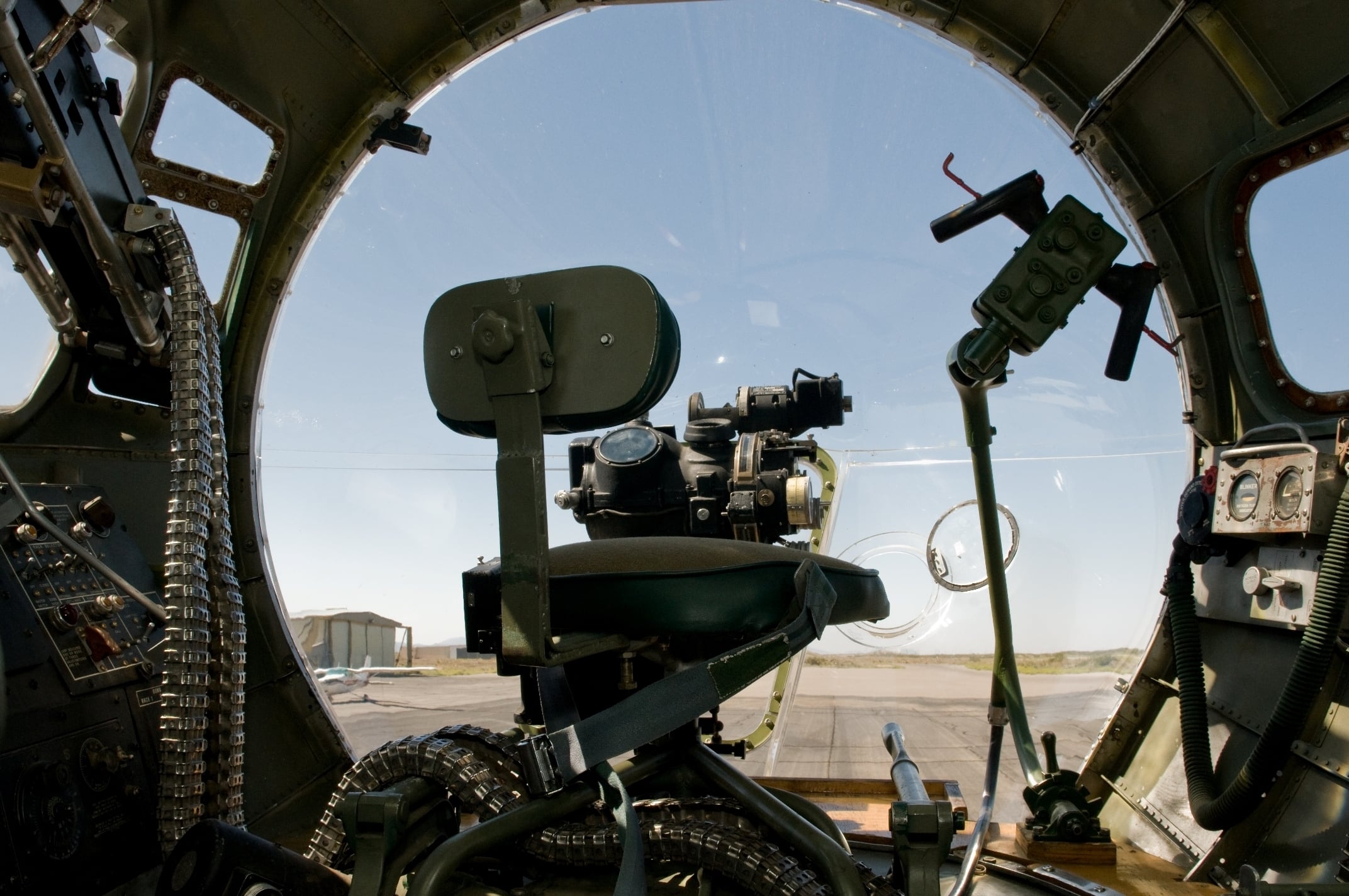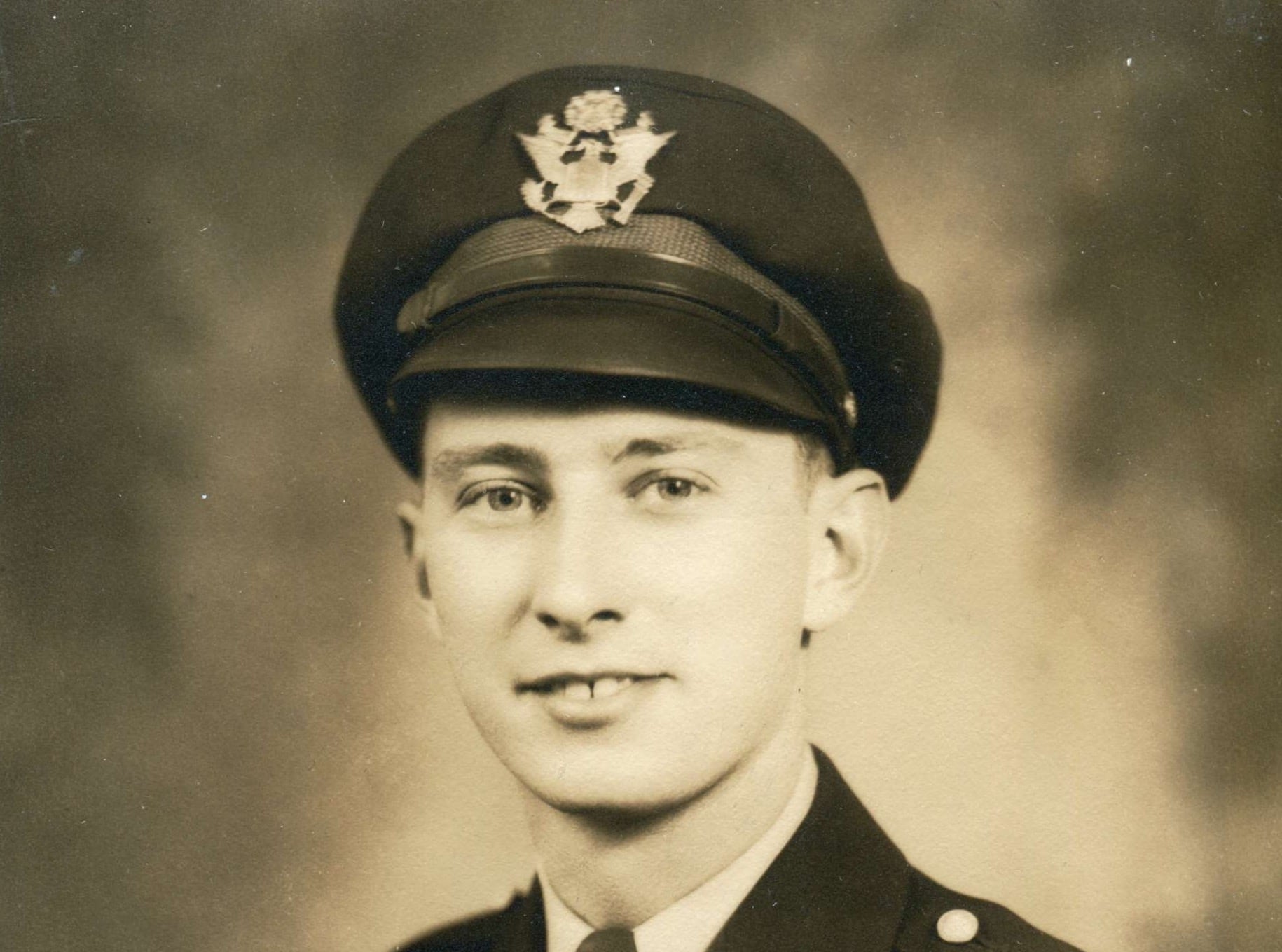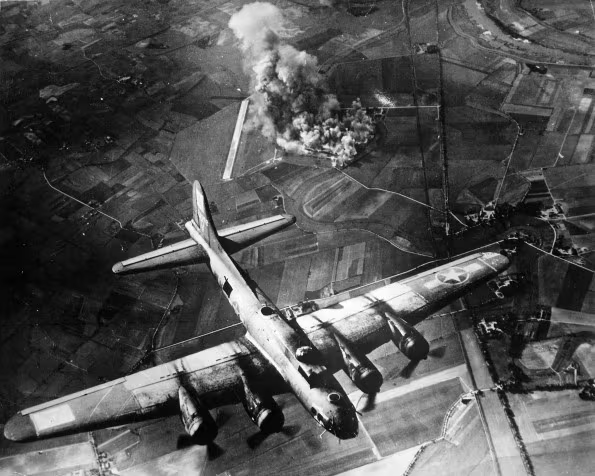John Luckadoo was just a wide-eyed 21-year-old lieutenant assigned to the Eighth Air Force’s 100th Bomb Group when he manned the controls and took to the sky for his first bombing mission as co-pilot of a famed B-17 Flying Fortress.
The aeronautical revelation at Luckadoo’s fingertips could fly at altitudes of 35,000 feet for up to 2,800 miles, and carried a hefty bomb payload supplemented by 10 .50-caliber machine guns.
But flying it proved deadly. So much so that the odds of a B-17 crewman surviving the 25 missions required to complete a tour were only one in four.
Until the 1944 introduction of the P-51 Mustang to the air war over Europe, the B-17′s impressive distance capabilities meant daylight bombing runs over Nazi Germany would have to be done without fighter escorts, leaving inexperienced B-17 crews to fend for themselves against seasoned pilots of the Luftwaffe.
What was worse, German anti-aircraft batteries peppered the American bombers with 88mm shells — or, “flak” — hurled five miles into the air that would explode within feet of a B-17 flying at its required bombing altitude.
One Flying Fortress crew member went so far as to compare the ever-present threat of shrapnel to Russian roulette. “You were going to be hit by it,” he said. “It was just a matter of where it would hit you and when.”
“Lucky,” a fitting moniker bestowed upon him by his men, would be one of the fortunate few to beat the odds and complete 25 missions, but certainly not before the war left its indelible mark.
Now 97, Luckadoo spoke with Military Times about the mental and physical toll of flying as a member of the “Bloody 100th.”
First, you and so many other B-17 crew members were rushed through training to get you into the air over Nazi-controlled Europe. Did you ever feel inadequately prepared as a result?
Grossly inadequate would be the better term. [Laughs]
In my particular case, I was assigned to a heavy bomber group that was just on the brink of being sent overseas. This was after the crews of the group, the Bloody 100th, had gone through all of the pre-combat training.
At the time, what was being offered was about three to four months of training. However, the graduates of my flight school were sent to replace the copilots just prior to being sent overseas. It was only in this one group that this ever took place.

Of the 40 men from my flying class that went to the 100th Bomb Group, only four of us managed to complete a tour. That gives you an idea of how inadequately trained we were and how unlikely it was that we were going to survive.
In comparison, what was your perception of the German pilots?
The Germans were professionals and we were rank amateurs. The minute that we crossed the French coast we were in their backyard. They dominated the skies.
They’d been fighting on the Eastern Front, through the Battle of Britain, and they knew what they were doing. When our group arrived in England, “Axis Sally” (Mildred Gillars) came on the radio and welcomed us, by name, to the war saying, “This isn’t your war, you don’t have any business being here. Your girlfriends and wives are being romanced back in the States, but as long as you’re here we’re going to teach you a lesson.” And by God they did.
Through a baptism of fire, we found out how professional and clever they were in discovering our vulnerabilities. The first of which was that we could not fire our guns straight forward. There was a gap in-between the top turret and ball turret guns so they would fly in that slot, straight through our formations. They played chicken with us, firing the whole way. It wasn’t until Boeing developed the G model (Boeing B-17G), which had a chin turret, that we would be able to cover that void. But they devastated us with that technique for as long as they could.
That air superiority was evident when the pilot of the Memphis Belle, Capt. Robert Morgan, remarked that you might have breakfast with 10 crewmen, but dinner with only two. Can you describe the mental toll of confronting your own — or your men’s — mortality with each mission?
When we were preparing to go overseas our commanding officer called us together and said, “Look at the man on either side of you. Only one of you will be coming back. You’re all going to be killed and you might as well accept it.”
That was the mindset that we were supposed to take into combat. That our chances of coming back were so minimal that we should accept our fate and just do the best that we could, for as long as we could.
Facing your mortality to that degree is a very sobering and maturing experience. It was so horrific that just one mission could turn our hair white. The sheer terror that we confronted was so devastating that it left a mark on us for life.
How did expectations for survival impact the bonds developed within a crew?
While you were in battle you had to rely on each member of your crew to perform their job to perfection or else you didn’t survive. You had respect for what they did and how they did it, particularly the gunners who were in the waist of the aircraft standing in an open window. How they withstood that cold I’ll never know.
The sad fact of it was that of all the 10 crewmen, the pilot and copilot were the only two members of the crew who didn’t have a gun to shoot back with.
And during a bomb run the actual flying of the airplane was done through the bombsight by the bombardier. For what felt like an interminably long period, the bombsight was connected to the flight controls. That was the way the ship leveled up to make the most effective bomb drop. The pilot and copilot had to just sit there with their arms crossed waiting to take over if necessary. Very few people realize that.

Speaking with the National World War II Museum, you said that during one such bomb run, “The flak was so thick that you could put your wheels down and taxi on it.” Can you talk about the conditions you flew through that day?
October 8, 1943 was my 22nd mission. Flying over Bremen, we experienced the heaviest anti-aircraft defense we had ever seen. The Germans had moved in some 300 88mm guns to protect their targets. We had never seen them throw up such a heavy barrage of defenses.
Also, what we had never experienced before was that their fighters were attacking us through their own flak. Prior to that they usually let us alone on our bombing runs. We would go ahead and drop our bombs and they would hope the flak would damage us sufficiently enough to force us out of formation. As soon as that happened their fighters could pick us off at their leisure.
On this occasion they were experiencing the same kind of potential danger that we were by pressing their attacks ferociously.
During that mission, the plastic nose of your plane was heavily damaged, which forced you to fly exposed to the elements for more than five hours in order to get home. How did that day unfold?
I was flying with a brand new crew because the crew I had originally gone over with had completed a tour and were being rotated back to the States. As we turned on the initial point for our bomb run, I noticed out of the corner of my eye that there was this flight of Focke-Wulf 190s that were headed straight for our squadron.
They fired all the way coming in and of course our gunners were pouring out as much lead as they could to dissuade them, but they never veered in the slightest. The lead fighter actually rammed the ship directly in front of me. It blew it out of formation and they both exploded. I had to dip my nose to keep them from taking me down with them, but his wingman actually scraped my top turret as he went across. That’s how close they came to ramming me.

I lost an engine due to a flak hit, and the plexiglass nose was blown out. I looked around and suddenly realized I was the only flight leader out of the entire group that was still flying. So, I fired a flare and the other five ships that were still airborne rallied around me and we came in with the 95th Bomb Group, which had lost an entire squadron. We tucked in with them and that’s how we got home.
The B-17 was unpressurized. So, at high altitudes we would experience temperatures of -50 to -60 degrees. You can’t imagine what it’s like trying to be effective and fight in that kind of cold. But the ironic thing is in the heat of battle you can suddenly find yourself sweating profusely, and that perspiration freezes instantly, blocking the flow of your oxygen through your oxygen mask. You have to leave one hand free to break up the ice crystals while flying the airplane with your other hand.
I suffered the only injury — physical injury — of my entire tour on that mission, and that was frostbitten feet. They were frozen to the rudder pedals so when I landed I had to land with my heels. I couldn’t even apply the brakes.
I still had three more missions to fly and we often lost many of our crewmen in the latter missions of their tour. But the horror of that mission stayed with me for the rest of my tour.
And you managed to make it back despite flying in the “Purple Heart Corner,” or the low plane in the low group. How did that position impact your chances of survival?
Well, you hated to be in that position because being on the fringe of the formation meant that you were going to get the full impact of the anti-aircraft defenses. Your formation actually stretched 1,000 feet deep and about 700 feet wide, so we were quite a floating target.
There was no question as to where we were because at that high altitude we’d be streaming out contrails for about 10 miles behind us. The Germans had full knowledge of where we were and how to track us. Their anti-aircraft was so highly developed — they had radar-controlled guns — so all they needed was Hitler Youth to load them. We probably lost as many aircraft and airmen to flak as we did to their fighters.
I really did not think we were going to make it back. I was pretty much resigned to that fact, but you stay so focused on what you’re doing — flying the airplane, trying to stay in formation, and keeping your morale up.
I was often asked after a mission like that, “How do you get back in the airplane the next day?”
I honestly don’t know. I think you just have to reach within yourself and say, “I’ve got one or two more missions to go."

You completed your last mission in early 1944. What was going through your mind during that final flight?
It was February 13, 1944, and that was the only mission of my tour that I got to select. I did that because as the operations officer of the squadron I was in the position to do so. I also had one pilot whose crew was on their 25th mission so I decided that we would select a milk run that would be less dangerous than trying to penetrate all of Europe.
We selected a mission to bomb the V-1 sights along the French coast. Our thoughts were that we would just duck over the coast, drop our bombs, and be back over the Channel. As it were, the Germans anticipated our raid and they ambushed us. We got shot up pretty royally so it wasn’t the milk run we had envisioned.
We were so thankful to be alive, both the pilot of the Alice From Dallas and me as the command pilot.
And what we did when we finished the 25th mission, or what you would do after you got back from a really horrific mission, you bent down and kissed the ground because you were so happy to be back.
But the truth of the matter is, nobody goes into battle and comes out the same. You’re a different person with a different perspective, a different psychology. You’re happy to be alive and you don’t really know why, but you realize that you’ve been spared and you just thank your lucky stars you were. You had a guardian angel on your shoulder. It was just a matter of pure luck you survived.
That’s why they called me “Lucky.” They ought to call me “Darn Lucky.” I wouldn’t be 97 years old without it.
John “Lucky” Luckadoo earned the Distinguished Flying Cross for his actions during WWII. He currently resides in Dallas, Texas.
The air war over Europe would claim the lives of more than 26,000 men from the Eighth Air Force, a staggering number that exceeded even the total WWII fatalities sustained by the entire Marine Corps. By war’s end, over 47,000 of the 115,000 U.S. Army Air Force casualties were from the Eighth.
The 2019 Smithsonian documentary, “Memphis Belle in Color,” chronicles the harrowing experiences of the Eighth Air Force. A WWII series on the Mighty Eighth is also in the works from “Band of Brothers” and “The Pacific” producers Tom Hanks and Steven Spielberg.
J.D. Simkins is the executive editor of Military Times and Defense News, and a Marine Corps veteran of the Iraq War.
Claire Barrett is the Strategic Operations Editor for Sightline Media and a World War II researcher with an unparalleled affinity for Sir Winston Churchill and Michigan football.





